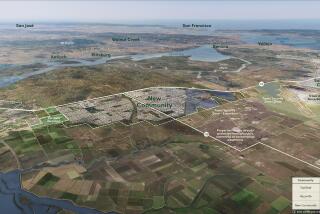THE CITY THAT NEVER WAS 200 Years of Fantastic Plans That Might Have Changed the Face of New York City <i> by Rebecca Read Shanor (Viking: $35) </i>
City planners and developers in America might place a sculpture in front of an office tower, a lake near suburban houses or a park around the corner, but our approach to urban design is still remarkably conservative, failing to create public spaces exclusively for serenity (such as Japanese rock gardens) or to radically break with convention, designing houses that fit into hills, for instance, or parks modeled after a work of art. Not all of the projects deftly chronicled here are creative enough to dramatically broaden our sensory experience, but all show how bold architects and designers can be before they have to face penny-pinching politicians and developers. There’s little doubt that some of these plans deserved to fail: Urban planner Rebecca Read Shanor evokes the colorful social history, for instance, behind the 200-foot dirigible mooring mast constructed in a mad race to make the Empire State Building taller than the Chrysler Building: Virtually every blimp crew in New York headed for the mast, Shanor writes, though all but one failed to make contact.
Many other ideas were truly visionary, however, showing a sensitivity to human needs that is often lacking today. An early draft of the United Nations General Assembly Building as a huge dome recognized the importance of symbols, for example, while Hugh Ferriss’ vision of a tranquil and traffic-free world for pedestrians on elevated sidewalks realized a need for human-scale cities that has only become more acute today.
More to Read
The biggest entertainment stories
Get our big stories about Hollywood, film, television, music, arts, culture and more right in your inbox as soon as they publish.
You may occasionally receive promotional content from the Los Angeles Times.










